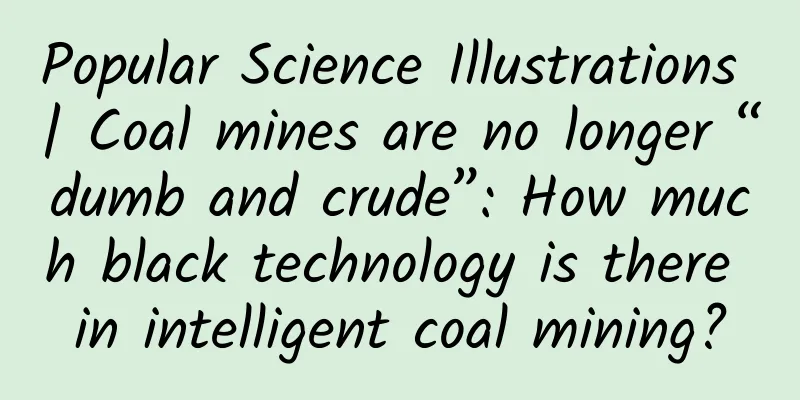How to write a competitive product analysis? Here’s a template to use!

|
If you are in product operations , competitive analysis has become an integral part of your job. Today I will bring you a summary of the competitive analysis methods and processes. I hope it will be useful for product novices and friends who need to do competitive product analysis in their daily work. What is competitive analysis The so-called competitive analysis refers to the comprehensive analysis of competitors, analysis of competition patterns, and analysis of competitive advantages. Generally speaking, the basic analysis process is as follows: 1. Data preparation: i.e. industry background analysis and competitor selection 2. Analysis basis: pattern analysis, location analysis, functional analysis and strategic analysis 3. Draw conclusions: competitive environment and competitive strategy When conducting a competitive analysis, we can focus on it from three dimensions. First, conducting a competitive analysis at the strategic selection level helps to establish the core competitiveness of products, effectively allocate resources, and reasonably set expected goals. Secondly, at the product optimization level, it is one of the sources of demand for competitive analysis and the driving force for continuous product optimization under competitive pressure. Third, from the perspective of personal growth. It can exercise logical thinking, enhance industry understanding, deepen the user-centered concept, and improve written expression skills. Ultimately, we come up with thoughts about competitive analysis, the core of which is to help ourselves develop competitive strategies and formulate solutions based on our own strengths. Competitive analysis preparation After understanding the concept and process of competitive analysis, we need to prepare for competitive analysis. It can be simply summarized into a 16-word policy: collect information - understand the market, select competitors, experience products, and summarize data. 1. Collect information and understand the market. Understand the overview of the basic industry, be familiar with the development stage of the industry market, understand the competitive landscape within the industry, and preliminarily judge new development opportunities or entry points. 2. Choose competing products. The competitions are generally divided into three categories: (1) Core competitiveness, namely, competitors in the first-tier market directly related to the product. (2) The significant competition is one of the most indirectly related products in the market. (3) General competition refers to other products directly related to the market segment. In the selection of competitive products, the 2/8 principle should be adopted, focusing on highlighting 20% of competitive products, while selecting 1-2 high-quality competitive products. 3. Experience the product. The experience methods include: basic operation process experience, interactive interface display mode experience, and functional experience. There are also some tips for experiencing products, such as starting from the scenario (5W1H), starting horizontally (all comparison functions) and vertically (experience functions). 4. Collect data. Data collection methods generally include: industry public data, inference of known data, empirical estimation, and technical capture. What exactly is competitive analysis? The preparations for the competitive analysis are already in place. You have to ask, what exactly is competitive analysis doing? In general, the basic ideas are: competition model analysis (overview), competitive positioning analysis, competitive function analysis, competitive strategy analysis, conclusions and suggestions (overview). 1. Analysis of competition landscape. Market size, market data analysis (competitive market share), market stage (monopoly, oligopoly, free competition; blue ocean, red ocean), see competitors' business models and where opportunities are. 2. Competitive positioning analysis. The main contents include target market positioning, product demand positioning, product differentiated value positioning and marketing mix positioning. The most important target market positioning includes the following parts: Target market positioning. The main analysis focuses on target users, user base, user reputation, and user behavior (see industry report). (1) Analysis of user categories and proportions. It mainly depends on the core users, mainstream users, ordinary users and the proportion of users. (2) User scenario analysis, i.e. when, where and under what circumstances the product is used. (3) Product function analysis. Product function analysis is mainly divided into three aspects: functional structure, user experience and product strategy analysis. Final Thoughts The process of competitive analysis is to know your friends and understand each other. At the end of the competition analysis, product managers need to clarify the competitive environment, clearly understand the basic situation of the competitive environment, and see where their living space is. At the same time, it is necessary to understand the changing trends and dynamic development trends of competition. Secondly, summarize the competitive situation, summarize the competitive advantages and disadvantages, as well as the advantages and disadvantages of the company itself/products in the competition, and explain that in the current competitive environment, the company's own characteristics may be advantages. Finally, suggestions for product development planning are given. Be sure to remember to give specific suggestions after the analysis. The reason for analyzing competitors is to absorb their essence and improve yourself. Source: Jianqunbao |
<<: 【Yangyang】Material Decryption Season 1 VR Advanced Material Tutorial [HD Quality with Materials]
>>: 【Xiaosheng】cos post-production collection【HD quality with some materials】
Recommend
The antigen T region is particularly red. Is it related to the severity of the disease? Expert response →
"Everyone says that the redness of my T-zone...
Consumer Reports tests Model 3 fully autonomous driving: Not worth it
There is a saying circulating on the Internet: &q...
After the box was “banned”, the living room fell into the hands of the license holder
Since the official listing of China Radio and Tel...
Excluding unexpected circumstances, how many years is it appropriate and cost-effective to replace a mobile phone? Have you met the criteria?
The service life of a mobile phone is generally a...
Comfortable! WeChat new version update: support mobile phone, iPad, PC terminal simultaneous login
[[411307]] Today, WeChat iOS version ushered in a...
The national vaccination of domestically produced shingles vaccine has officially started, and experts recommend vaccination for people over 50 years old
New Media Editor/Wang Shan Recently, the first li...
Performance is seriously "biased" and the market outlook is under pressure. BAIC New Energy plans to acquire a backdoor listing to become the "first stock of new energy vehicles" in the A-share market.
Recently, Chengdu Qianfeng Electronics Co., Ltd. ...
How does a sports watch know your altitude?
"How thick the earth is, how high the sky is...
Yellow warning! Heavy to severe snow in parts of Liaoning and Jilin, heavy snow in some areas, please take precautions against cold and slipping
Yesterday (January 26), some areas in Liaoning an...
How to take a photo using WeChat on PC? Introduction to the use of WeChat Tap on PC
Can I use WeChat Tap on PC? Everyone is worried a...
Is it reliable for celebrities to cross over and start e-commerce businesses?
Shortly after American actress Jessica Alba domin...
Youku tests smart hardware to expand IP diversification
The ultimate goal of video production is to achie...
With 6,500 units sold in half a year and a loss of 82 million euros, why is Stellantis still not interested in selling Maserati?
The century-old Martha was destroyed by micro-bus...
Why is WeChat far less profitable than Facebook?
An interesting data is that in the third quarter ...
APP operation: Can the revenue from application push be increased by 400%?
Push is the most cost-effective and direct market...









